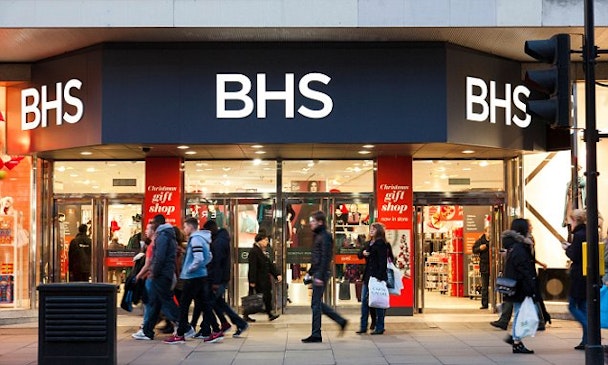As the administrators are called, what went wrong at brand BHS?
In the biggest loss to the high street since Woolworths went bust in 2008, BHS looks set to disappear from the British high street after 88 years as the ailing retailer's last ditch attempt to save the brand failed. Chief executive Dominic Chappel informed its 11,000 staff in writing today (25 April) that the administrators would be called. So what went wrong?

There are a multitude of reasons, not least a £571m pensions deficit, which proved too great a hurdle to finding a buyer. But deeper issues with the brand have seen shoppers turn elsewhere over the past few years leading to unsustainable losses; according to its last set of results published with Companies House it was £70m in the red in 2013.
Investment in trying to turn around its image has not been a priority. Nielsen figures show that its marketing budget dropped by nearly half last year, while the in-store experience has fallen by the wayside with many noting that, aside from its flagship Oxford Street branch, it’s like going back in time when you step through the retailer’s doors.
Compare this to its biggest rival, John Lewis, which has been spending heavily on the tech supporting its omnichannel experience and nailing its all-important click and collect proposition.
“The attention has all been on the debts of the business but the ongoing strategy of BHS has been neglected,” said Phil Dorrell, partner at retail consultancy, Retail Remedy.
“There isn't a reason to shop there. The supermarket offers tick all the boxes that BHS once owned and without a radical change in proposition there just isn't a space for BHS to occupy.”
In fairness, some marginal efforts have been made to recalibrate the brand with shoppers. BHS bosses laid out plans in early 2015 to try and position itself somewhere between M&S and Primark. Emulating the former, a focus on food saw it outsource all its cafes and restaurants to a catering group while it forged ahead with plans to open some 20 dedicated food stores. In hindsight, this was a somewhat puzzling move given the turbulence and challenges facing the grocery sector.
Meanwhile, attempts to reinvigorate its advertising with the hire of Publicis Groupe’s specialist retail agency Vivid Brand last year and a tie-up with Holly Willoughby as brand ambassador seemed to signal its intention to ramp up its efforts. Until that time, they had mainly consisted of an uninspired TV ad for its AW12 collection and a year later a somewhat sexier, although still as bland, ad for the AW13 range.
However, the fruits of those relationships never seemed to bear, with little to show on the advertising front since last April and no clear identity ever established to set it apart from rivals.
“BHS just hasn’t done enough to stand out and catch the increasingly fragmented attention of ever-demanding shoppers,” said Suptasree Roy, associate partner at TH_NK – an agency which guides brands through digital transformation.
“A household brand that used to appeal to cost-conscious shoppers and managed to take over where C&A left off, BHS failed to evolve at the rate of other department store retailers such as House of Fraser, John Lewis and Debenhams. We’ve all forgotten that it’s there and the old reasons for visiting such as school uniforms, homeware and lighting have all been superseded by better offerings on the high street. Shoppers these days are spoilt for choice and convenience, meaning retailers need to stand out in some way.”
Today’s administration announcement also draws a line under the recent fighting talk from boss Chappel to “make the British brand iconic again”. Despite poaching House of Fraser’s brand marketing boss Tony Holdway as marketing and creative director at the beginning of this year, it seems to be an all too familiar case of too little too late for brand BHS.
“The recent demise of the store UK, much like Woolworths in 2009 shows that even well-known and respected brands cannot survive purely on nostalgic links and consumer habits for ever,” remarked London School of Marketing’s Jacques de Cock.
If luck is on BHS’ side and a buyer does come forward to rescue the high street giant, then swift attention must be paid on trying to get it back on track when it comes to catering to the needs of today’s increasingly digital shoppers.
Whether it borrows from John Lewis and Sainsbury’s and sets up a dedicated division to test technology that can improve the on and offline experience or hires an agency that can hold its hand through digital transformation (as New Look has recently done), one thing is for certain: retailers can no longer rely on heritage and brand love to see them through.

